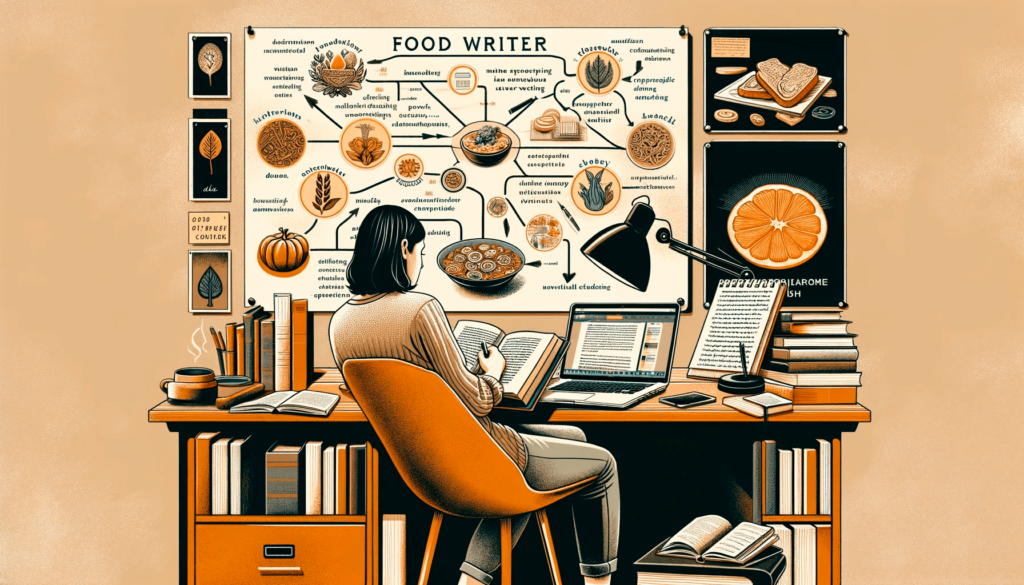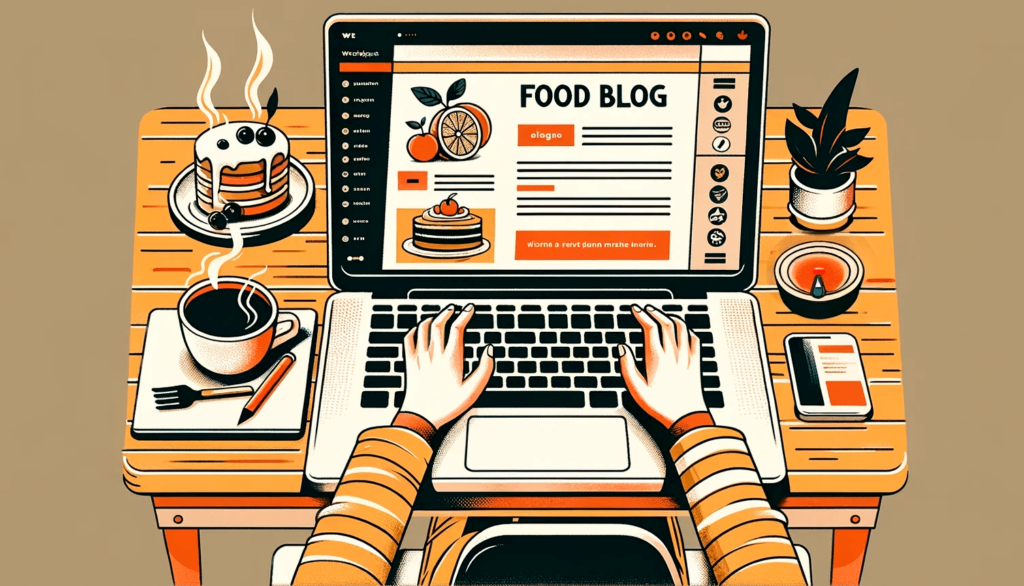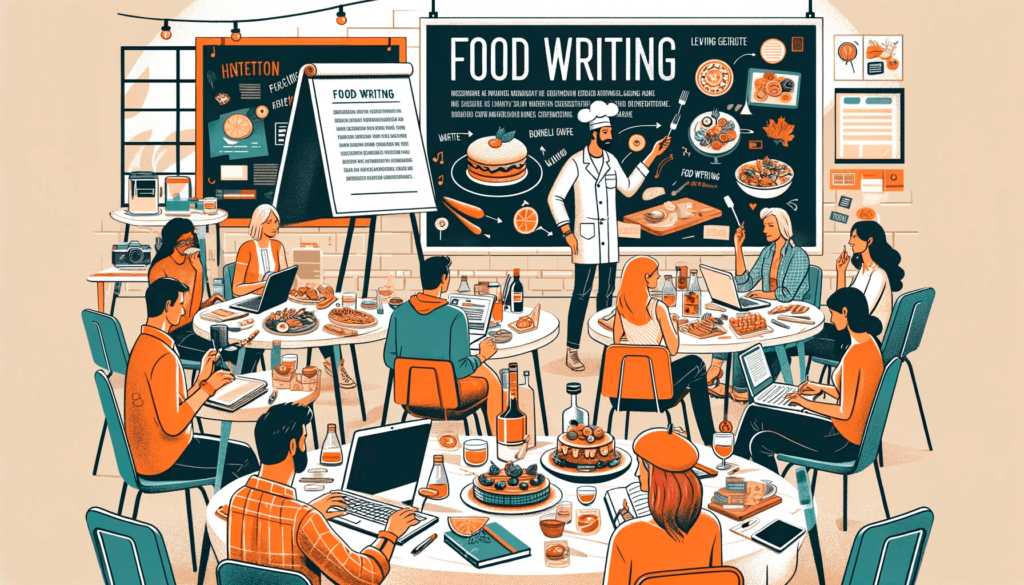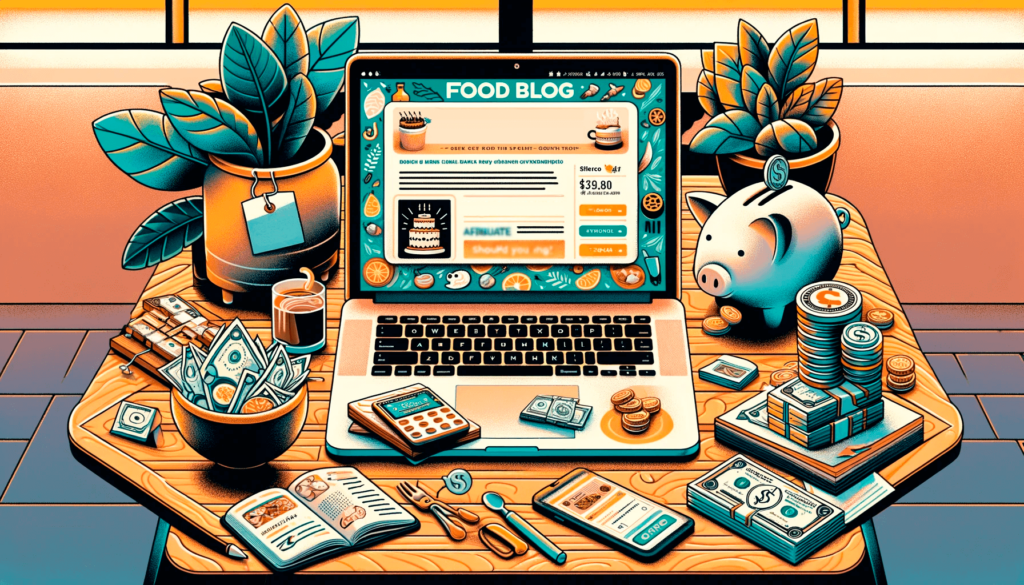
Learning how to become a food writer can be a dream come true for many of us. While there is a long way to go from zero to hero when it comes to food blogging and writing in general, you should know right off the bat that anything is possible. This is true as long as you understand a couple of relevant concepts, put the work in, and apply the right strategy.
Becoming a food writer is definitely a journey, but we are here to help you overcome most of the challenges you will face along the way and offer you some of the most important tips and tricks for achieving your goal.
Quick Summary
Want to become a food writer? Here’s a quick rundown:
- Find the niche of food writing that interests you the most.
- Learn extensively about your chosen niche and stay informed.
- Start a blog or website to publish and showcase your writing.
- Practice regularly to improve your skills and build a portfolio.
- Build your network of food writers and industry professionals.
- Use tools to enhance your writing and blog management.
- Find ways to earn money through your food writing.
Let’s start with the beginning, shall we? What is a food writer, and what does it really mean to be a food writer?
What Is a Food Writer?
At its simplest, a food writer is someone who writes about food and drink. But there’s so much more to it!
Food writing can encompass a wide range of activities. You might be a restaurant critic, sharing your thoughts on the latest dining hotspots. Or you’re a recipe creator, crafting detailed guides to help your readers cook delicious meals at home. You could even be a food blogger, documenting your culinary adventures and sharing personal stories.
Being a food writer means combining your passion for food with your love for writing and using that combination to connect with and inspire others.
Types of Food Writing
While being a food writer can take many forms, as long as there is some writing and food involved in the activity, some types of food writing are more relevant and common.
- Recipe writing: creating detailed, step-by-step guides for cooking specific dishes. This type of writing is precise and focused on accuracy and clarity, enabling readers to replicate the dish.
- Restaurant reviews: critiquing restaurants includes discussing the ambiance, the food, the level of service, and the overall dining experience. This type of food writing is focused on providing an honest, accurate, and objective perspective that will help readers decide whether they will or will not visit a particular restaurant.
- Food blogging: Food bloggers write about their culinary experiences in a free form. Whether sharing recipes, telling stories about culinary experiences, or creating any other type of food-related content, food bloggers engage readers with an informal tone, storytelling, and photography.
- Travel food writing: exploring the world and trying out the food from different corners of the world can be a fantastic experience, and many food writers share it with their readers. This type of writing focuses on describing different foods and cultures, using photographic support and storytelling.
As you can see, there are more than enough niches to choose from, but what you should know from the start is that being a food writer comes with endless possibilities in terms of the topics and angles you choose to approach it from.
How to Become a Food Writer
Even though being a writer is, from several points of view, somewhat of a liberal thing that sometimes involves breaking the rules and using your imagination more than anything, becoming a food writer is something that should be done with a good strategy.
There are several steps you shouldn’t skip, especially if your plan is to learn how to become a food writer as part of a professional switch. If you want a career in food writing, here are some of the most important steps.
1. Find Your Niche
Possibly, one of the most relevant things to do before you get started with anything else is finding your niche. As described above, food writing has many facets.
Whether you want to be a food critic, a traveling food blogger, or a recipe writer, you must find your place in this food blogging universe. You can achieve a lot, but it depends on how well you understand what people need and want.

Here are some exciting niche ideas for food writers:
- Farm-to-table blogging: cooking with locally sourced ingredients and supporting local farmers is a growing trend in the culinary world
- Historical culinary explorations: finding the roots of eating habits in different regions and trying to recreate the original recipes that were invented centuries ago—are challenging but rewarding and eye-opening.
- The science behind cooking: exploring the science behind cooking techniques and what happens on a molecular level during cooking with all the different ingredients used
- Cooking for people with dietary restrictions and allergies: more and more people discover that not all food works the same for their bodies.
- Meal planning and food waste reduction: with people having less and less time for cooking and a growing awareness of food waste, this can be a very lucrative niche for you as a food writer.
2. Educate Yourself
Regardless of the niche you choose, you will need to ensure that you are well-informed on the topic before you start writing. This research is required to deliver a message your audience will be interested in and ensure that you like the topic enough.

Being a food writer means a lot more than being able to appreciate good food and be knowledgeable on the topic you chose as your niche. You will also need to understand how important the quality of the content you deliver is.
Educating yourself in your journey to becoming a food writer will require multidisciplinary research. With the right strategy, a good mindset, and some dedication, you can quickly learn everything you need to know.
3. Start a Blog or Website
Once you have the idea and the know-how, you will need a platform to make your writing visible to your audience. For that, you will need a blog or website. The easiest way to get started with creating your food blog is to use WordPress.

With WordPress, you get more than enough features at your fingertips without having to focus too much on the technical side of things. You can choose from a vast selection of WordPress food blog themes and edit them to match your preferences both in terms of design and functionality.
You will need to buy a domain name, select a hosting provider, and build your website from scratch using WordPress or a similar tool. Alternatively, if your budget allows it, you can hire somebody to do this for you.
Our advice is to avoid big expenses at the beginning of this journey. Moreover, getting the website built yourself will be very rewarding and will allow you to better understand how to manage it once it is up and running.
4. Practice Regularly
Begin by reading and analyzing other food blogs and articles. Then, start creating your content by writing about your culinary experiments, restaurant visits, or food-related travel experiences.
Practice makes perfect. Always. Staying connected to the world of food blogging one way or another will ensure that you are always in the loop with what is happening and how the trends shift.

Writing is a discipline like any other and will require lots and lots of practice to master. And like many other things, your level of expertise will change over time depending on how much or how little effort you invest.
If you write constantly and practice your skills regularly, you will slowly improve as time passes. Your audience will appreciate it. If you only write once in a blue moon, the result will lack quality to a certain extent.
Write a lot, write about anything, and publish only the pieces that are worth it for you and your readers. The more you do it, the easier it will become, and the better you will be.
5. Build and Leverage Your Network
Connecting with other food writers, chefs, and food enthusiasts. Attend food festivals, join food writing groups, and engage on social media platforms like X (ex Twitter) and Instagram.
The world of food blogging, despite being an online adventure, has many offline aspects as well. Whether you are a traveling food blogger, a restaurant reviewer, a recipe writer, or simply an amateur journaler documenting your adventures through the culinary world, you will need to get out of the house and connect with others around you.

Step out of your comfort zone and meet new people, eat new things, and cook things that are just figments of your imagination. Stay connected with other people in the industry and try to create a network of people with similar interests that help each other.
Staying connected to the culinary world will be an amazingly important part of your journey, so make sure to make yourself visible and approachable. Use social media platforms not only to promote yourself and your blog but also to connect with others with similar interests. You can easily join Facebook groups dedicated to your particular interests.
Be active on Instagram, X, and TikTok. They can be a hugely profitable source of traffic for your blog, and the fact that their algorithms can pinpoint your interests and goals with excellent precision will be a beneficial way for you to connect with the industry and stay up to date with everything that changes.
6. Use Tools and Technology
Familiarize yourself with digital tools that can enhance your writing and blogging. For instance, WordPress is a popular platform for food bloggers, and tools like Recipe Card Blogs can help you create visually appealing recipes that engage your readers.

There are also a lot of WordPress plugins that can help you design a website and make it work exactly how you want it to. There are several categories of plugins you should explore:
- SEO plugins will help you ensure that the content you publish follows SEO best practices, keeping your website ranking well on the keywords that matter to you.
- Security plugins are important to block possible attackers and maintain your website as a safe destination for you and your readers.
- Performance plugins can be an excellent way for you to keep your site performing well, have quick loading times, and be an interactive destination with zero lag for your readers.
- Cooking-dedicated plugins are a thing and can deliver outstanding services to those involved in food writing in general. There are options, whether you want something to organize your ingredients better when posting a recipe or a calorie counter to ensure the content you post follows the guidelines for a healthy lifestyle. Recipe Card Blocks is a vital tool to have that can deliver a fantastic experience for you and your readers.
On top of this, using tools to enhance your writing can be an option as well. Tools like SurferSeo, Frase.io, or Quillbot can greatly help write content. AI can also be a way for you to speed up the writing process, but you will need to pay extra attention to how much-unedited AI content you publish.
You shouldn’t shy away from taking advantage of everything modern technology has to offer. Whether it’s WordPress plugins, high-quality filming, and photographing equipment, or simply the most modern tools to help you manage your website content-wise, you should take full advantage of everything that can make your life easier and your website better.
7. Monetize Your Writing
At the end of the day, you should find ways to earn money from being a food writer. That is if you want to be able to do this for a long time and professionally. Luckily, monetizing your passion for being a food writer will be relatively easy. There are many options out there for you.

Here are some of the most popular ways for you to monetize your food writing:
- Create your blog and monetize it. Building your site and making it generate an income is a great way to take advantage of what being a food writer can mean to your lifestyle. There are countless ways to earn money from a food blog; some can be particularly lucrative if you get lots of traffic and have a credible online presence.
- Freelance writing. If you cannot create your own food blog or just don’t want the hassle and responsibility of being your own boss, you can always go the other way and start writing for different publications or websites.
You can write articles, reviews, SEO-friendly blog articles, or even your section in a magazine or newspaper. You can get paid as an employee, on a pay-per-word model, or an hourly rate.
Being a freelance food writer can be very rewarding financially and as an experience. - Write and publish cookbooks. If you have lots of experience cooking and you have some wisdom to share in the form of recipes, you can easily make yourself known in the culinary world by writing your cookbook.
The great thing about this option is that you don’t necessarily need a publisher. You can self-publish via different platforms like Amazon Kindle Direct Publishing. You can publish e-books or paperbacks, and the most important thing to remember is that as long as you share something people care about, your materials will be read and appreciated.
Bottom Line
Learning how to become a food writer can be a great way to express your love for food and the culinary world in general. Regardless of how you decide to approach this, as long as you do things with the right mindset, strategy, and elbow grease, you will succeed.